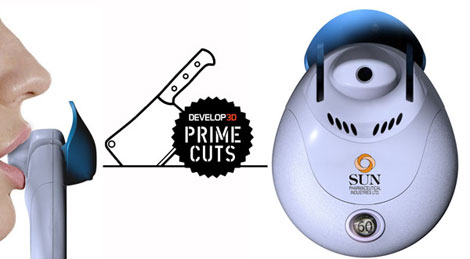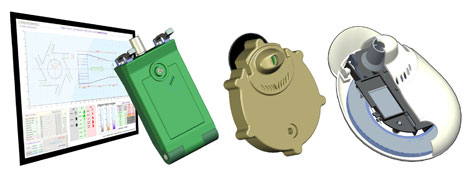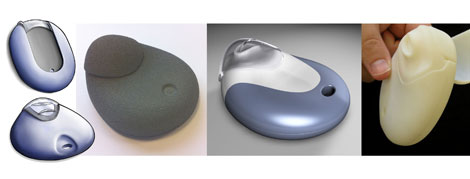
Lifesavers for millions of people around the world, inhalers have not been without their design challenges, hence Cambridge Consultants set out to develop this next generation device.
The Combitide Starhaler has been designed for the Sun Pharma Advanced Research Company Ltd, to treat respiratory diseases such as asthma and chronic obstructive pulmonary disease, and has several key benefits over traditional aerosol based inhalers.

– Not requiring a propellant, it uses the patient’s breath to effectively ‘pull’ the drug into the required area of the lung.
– To improve the delivery of drugs to the target area, Starhaler features a de-agglomeration mechanism that separates the drug from the lactose ‘carrier’ particles. Combined with a highly efficient airway design, it ensures that more drug is delivered to the lung than by traditional inhalers, regardless of the strength of the patient’s intake of breath.
– The key requirement of the device was therapeutic performance
– The inhaler gives audible and tactile feedback to indicate the delivery and completion of user steps
– Inbuilt is a numerical dose counter for at-a-glance indication of doses remaining, a luminous feature so that the device can be found in the dark in the event of an asthma attack during the night, and a small pop-out ‘Braille’ button which activates when there are only a few doses remaining
– Theoretical models were created that simulated the device’s air path, showing pressure drop, resistance and flow of selected areas of the device, and were then proven in Pro/Engineer
– A complete prototype containing machined and moulded parts was used in phase 2 clinical trials, which showed an improved performance over the industry standard device while using approximately 50% less active drug pre-loaded into the device
– After the mechanical prototypes were proven, designers then set about making it viscerally more appealing: a compact palm-held form as the starting point, foam models and sketches were generated around the complex dose carriage and delivery system
– Solidworks was used to create a concept casing and visualised using Cinema 4D
– SLA prototypes proved the form was comfortable in the hand, and a visual block model was made with a fully functioning cap opening detail to be tested in full user studies
– Cambridge Consultants continued iterating the device design in Pro/E and oversaw design transfer to manufacturing and scale-up, with the final production device launching in June 2011







